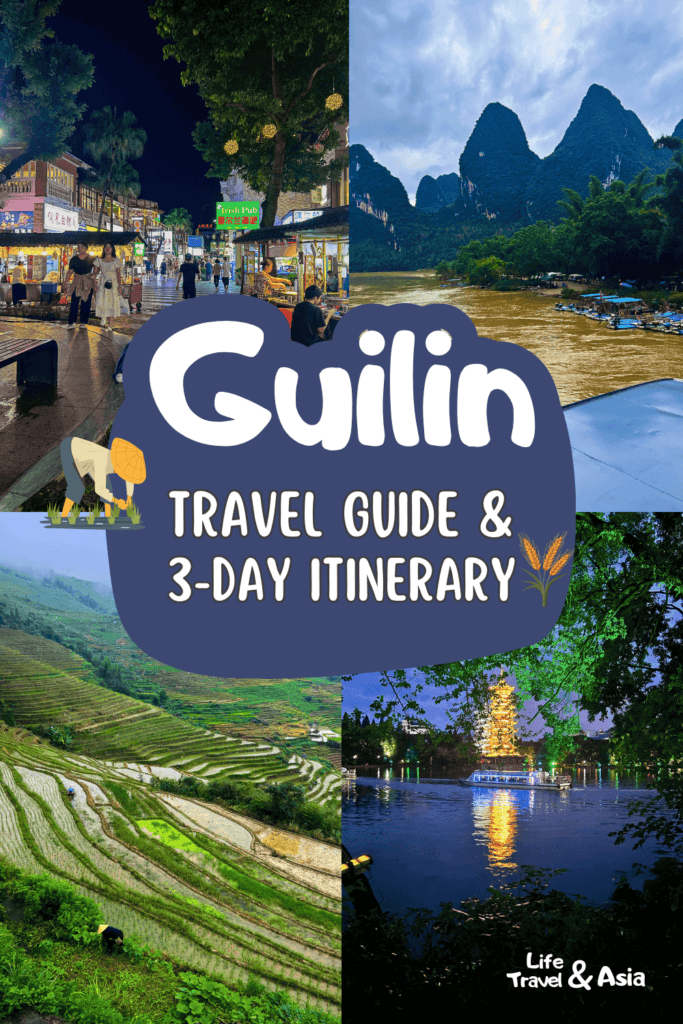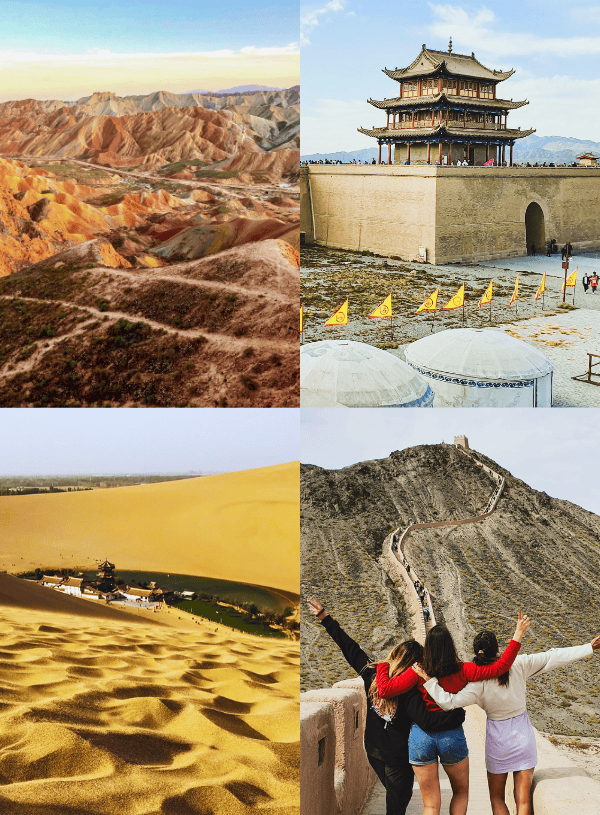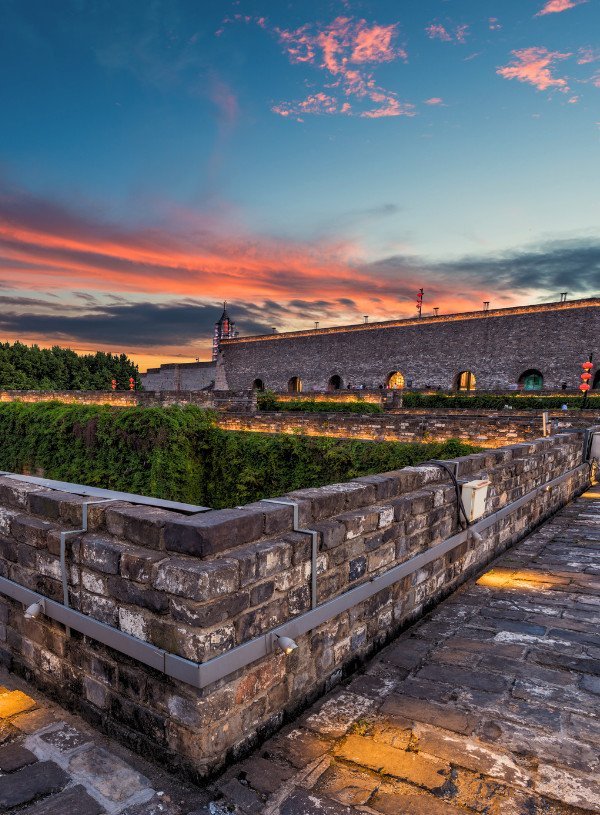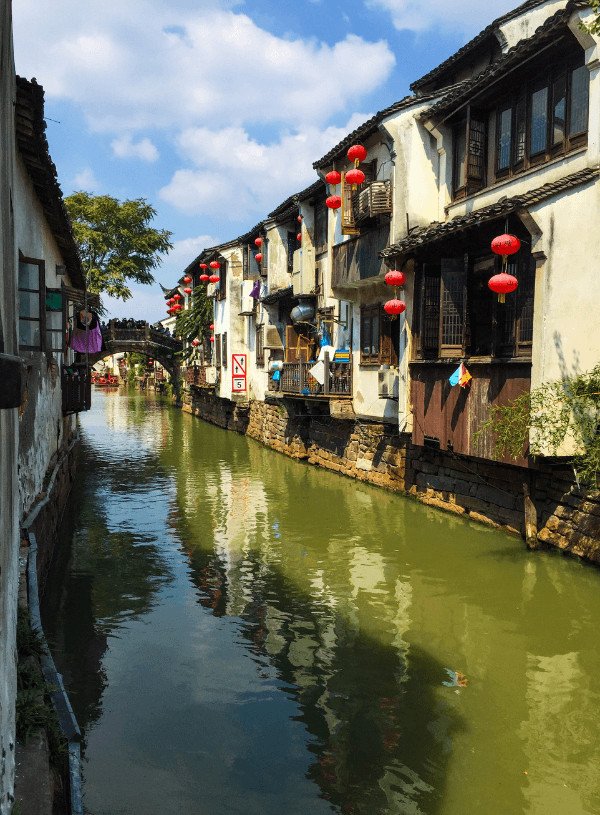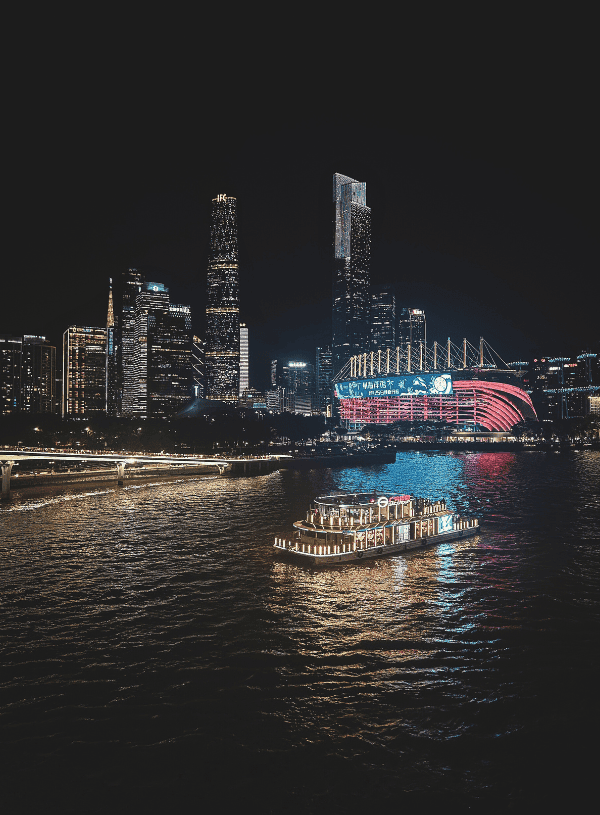Planning your first trip to China and looking to venture beyond the typical tourist trail? Then Guilin should be on your radar! This stunning destination has been on my China bucket list for years since I first arrived in the country in 2018. I’ve longed to hike its lush rice terraces and enjoy a boat ride surrounded by its karst landscape.
In the Summer of 2024, I finally had the chance to visit this incredible location in southern Guangxi Province. It exceeded all my expectations, and I’m sure it will exceed yours as well. In this Guilin travel itinerary, you’ll find helpful tips to plan your trip and some inspiration on how to spend 3 days in Guilin.
This article may contain affiliate links. This means that if you purchase through one of the links, I may be paid a small commission at no extra cost to you.
Don’t have time now?📌 Pin it for later
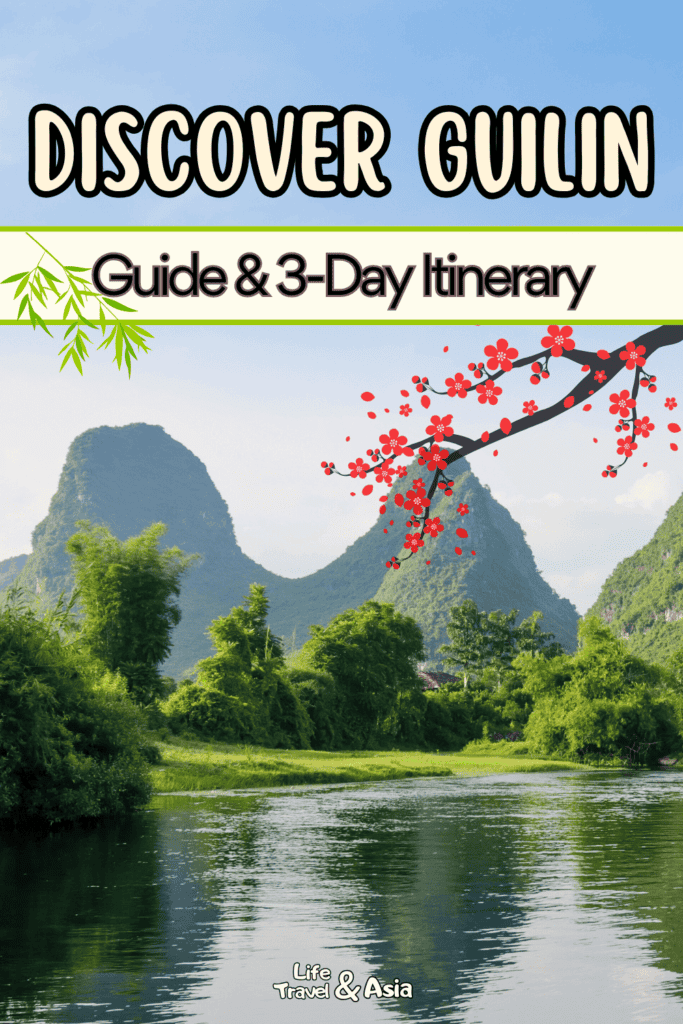
Quick Tips for First-Timers
Is Guilin Worth Visiting?
Thankfully, Guilin isn’t yet a major tourist destination for foreigners in China, and there’s a simple reason why. It’s not known for a modern city center or towering skyscrapers.
Here, nature takes center stage (which might surprise those who don’t associate China with stunning natural landscapes). But to answer your question, yes, Guilin is absolutely worth visiting.
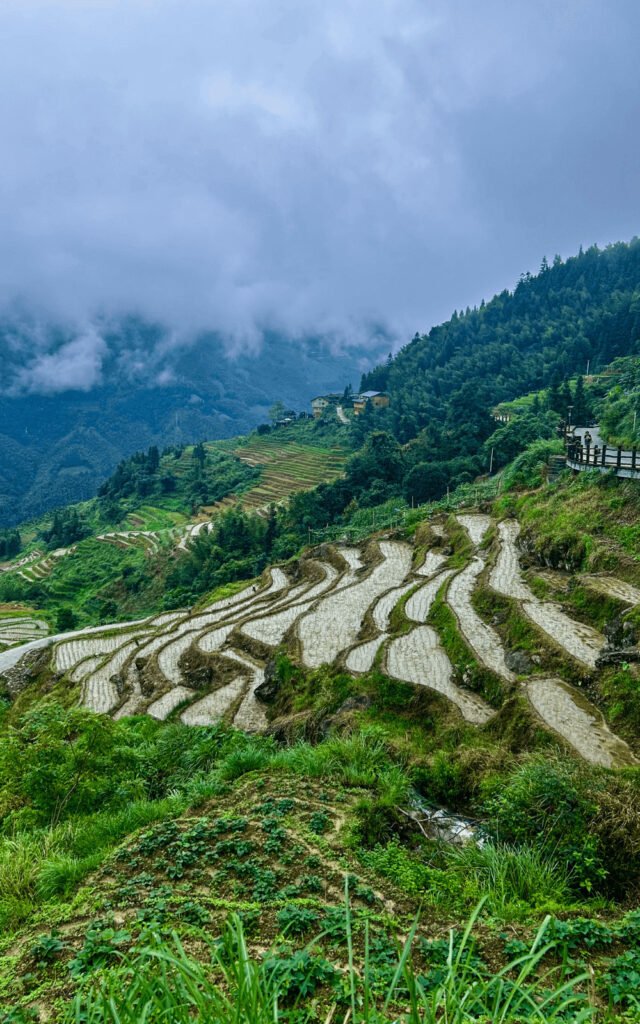
Tucked away in southern China’s Guangxi province, Guilin is curiously known as the city that never sleeps (you’ll find shops open and people out and about late into the night). But its dreamy karst landscape and lush rice terraces are the main draw for nature lovers.
One of its most famous hills, along the Li River, is even featured on the 20 yuan banknote. And that’s not all: Guilin also boasts delicious cuisine, including the renowned (at least in China) rice noodles and beer fish.
If you’re seeking a more authentic and local experience after exploring popular destinations like Shanghai and Beijing, Guilin is the perfect choice. You’ll encounter farming and fishing communities, interact with Chinese minorities, and witness the untouched beauty of southern China.
Planning Before Departure
Best Time to Visit Guilin
I visited Guilin between late June and early July, right in the middle of the rainy season Southern China…don’t make the same mistake! I think I experienced the worst downpour of my life, even worse than anything I encountered in Bali during its rainy season. (I really have to stop traveling to places during the rainy season!).
Unlike some destinations, you don’t need to worry about seasonal price fluctuations in Guilin, as they tend to be lower and less variable compared to more expensive cities.
The best time to visit is from mid-September to October (but avoid the first week, as it coincides with a national holiday in China). The spring months, from March to May, are also excellent, especially if you want to see the rice terraces bursting with vibrant greens and yellows and enjoy clearer skies over the karst landscape.
How Many Days Should I Stay in Guilin?
Guilin is a place where you can easily spend weeks exploring the surrounding natural area and ancient villages. The area is dotted with charming towns like the must-see Yangshuo, Longji (famous for its rice terrace hikes), the historic town of Xingping, and the movie-famous Huangyao.
While you could spend weeks exploring Guilin (and if you do, lucky you!), I’m guessing you probably haven’t planned to stay that long. I think 3 or 4 days is a reasonable amount of time to explore Guilin city, some of the surrounding natural sights, and perhaps visit one of the charming ancient towns. A 3 day itinerary is enough to get a good feel for this beautiful corner of China.
How To Get to Guilin
If Guilin isn’t your first stop in China, you have two main options for getting there. I have a personal rule when traveling in China: I avoid train journeys longer than eight hours. If the train ride exceeds that, I’ll opt for a flight, even with the added hassle of airport procedures (passport control, baggage claim, etc.), because the overall travel time often ends up being shorter.
How To Get To Guilin From Shanghai & Beijing
If you’re coming to Guilin from some northern cities like Shanghai and Beijing, the train ride will exceed 9 hours, so the best option is to take a flight and land at Guilin Liangjiang International Airport (KWL). Once at the airport, you can take a licensed taxi or book a private car ride directly to your hotel. This allows you to avoid the language barrier with the taxi drivers.
How to Get to Guilin By High-Speed Train
If your departure point is a more central city like Chengdu or Chonqing, planning to get to Guilin by high-speed train is much more feasible. The train ride from Chengdu is “only” six-and-a-half hours, which will be a good opportunity to catch up on some sleep.
You will arrive at Guilin West Station, and from there, you can take a taxi to your hotel (make sure to have the address written in Chinese characters!)
To book your tickets, make sure to download the app Trip.com. You can easily purchase tickets there.
How to Get Around in Guilin
Guilin is one of the more remote areas in China without a subway system. This makes it less touristy than other cities, but also a bit trickier to navigate if you don’t speak Chinese. If you book your accommodation in the city center (Shanhu Lake area), you can easily walk to the main sights in downtown Guilin.
Taxis
Taxis are a typical means of transport and are readily available for standard routes. They can even take you to more remote sights like the Longji Rice Terraces. However, make sure you’ll be able to get a taxi back. It’s always a good idea to ask your hotel staff for advice on reaching and returning from more remote locations. Make sure to install DIDI, as it’s a lifesaver when taxis are unavailable.
Buses
Buses are also an option for getting around Guilin. They generally take longer than taxis, and you must be extra careful about the destination. I rarely used buses during my time in China, but if you do, triple-checking is essential.
First, consult a website like Rome2Rio or the iPhone Maps app for the correct bus number. Then, confirm the information with your hotel staff. Finally, show the address (written in Chinese) to the bus driver and wait for their confirmation. A little paranoia is better than ending up miles from where you intended to go.
Where to Stay in Guilin
I stayed in the Shanhu Lake area during my time in Guilin. It’s right next to the lake, offering beautiful views of the Sun and Moon Pagodas. It’s the most vibrant part of the city. From there, it’s an easy walk to Zhengyang Pedestrian Street, a lively area with plenty of shops, restaurants, and bars to spend your evenings.
I stayed at the Lijiang Waterfall Hotel in Guilin. The hotel’s entrance is right in front of the Lake, and its position is unparalleled if you’re interested in exploring downtown Guilin on foot. Even if the breakfast didn’t have as many Western options as other hotels I’ve been to, the swimming pool made up for that. Nothing better than taking a dip after a day of exploring.
Suggested 3-Day Guilin Itinerary
We arrived in Guilin in the late afternoon and, right after landing at the airport, we took a taxi to our accommodation. We then headed to the main street to grab something quick for dinner and immediately returned to the hotel, as it was pouring.
Day 1: Li River Cruise & Yangshuo
Li River Cruise
After breakfast, our guide picked us up, and we headed to the Guilin ferry departure point. Ahead of us: three hours of total karst landscape immersion on a relaxing river cruise winding through the most famous sightseeing spots.
We booked our tickets here, and we received the exact departure location and timing. (Remember to have your address readily available if you are going by taxi).
The earlier you book, the better. And if you’re lucky (unlike me!), and get a clear day, the karst hills look even more magical in the morning light.
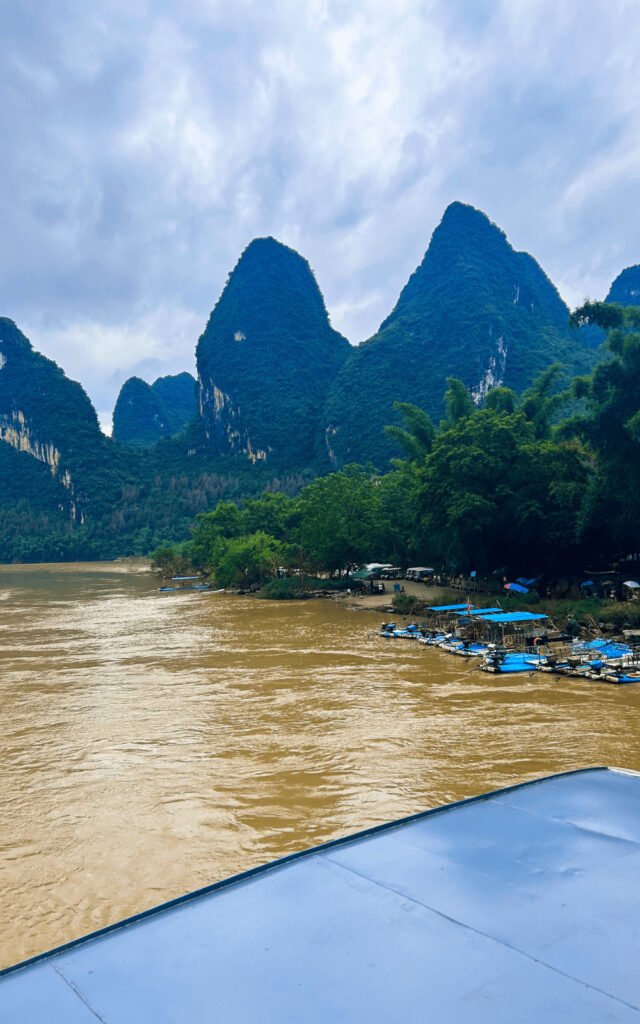
The cruise itself took about three hours, but it wasn’t until about an hour in that we reached the most famous karst formations – and it was totally worth the wait! The karst hills in all my pictures are incredible (despite the bad light), but seeing that landscape in person after four years of waiting was truly special. Guilin was the very first place on this trip that I hadn’t been to before.
I headed up to the open deck for unobstructed views of the river and hills, and even caught a glimpse of some small rural villages along the banks. I also spotted those iconic fishing boats famous throughout Southeast Asia (you can even rent one if you explore the area on foot!).
2. Yangshuo
Three hours flew by, and pop, we were in Yangshuo! It’s incredible – this small southern village (despite being very touristy) seems to have sprung up amongst the hills.
Everywhere you look, you’re surrounded by karst mountains. We stopped for a seriously delicious southern lunch; we just picked a random place because we were starving.
If you’re looking for dishes to try in Yangshuo, I’m still dreaming about the stir-fried meat with upu taro (it’s like a potato, but better!). Then there’s the beer fish – famous for a reason! And honestly, I also had my fill of rice noodles – a true comfort food!

After lunch, we explored Yangshuo and the main street, West Street. Yangshuo is filled with souvenir shops, textiles, and small groceries offering a wide range of Chinese products. I even saw a couple of expats setting up a shop.
There’s nothing special to see or do there. Yangshuo’s special feature isn’t so much what you find there, but the surrounding landscape and nature.

To Remember About The Cruise
The river cruise is a one-way trip. Once in Yangshuo, you have a few options:
- Stay overnight: Explore Yangshuo further and enjoy the town’s atmosphere. This is ideal for an early morning hike to Xiangong Mountain for incredible views (which I’ll definitely do next time!).
- Return to Guilin: Arrange private transportation back to Guilin. (I chose this option, but I regret it now!)
Staying overnight in Yangshuo, or closer to Xiangong Mountain, is highly recommended if you want to hike to one of Guilin’s most stunning viewpoints.
Day 2. Xianggong Mountain & Guilin Visit
Hiking the Xianggong Mountain
Unfortunately, this is not the itinerary I had. But, if I could go back in time, I would make time for the best view of the Guilin area.
Where to Sleep Close to Xianggong Mountain
If you’re planning a sunrise hike, finding an accommodation closer to Xianggong Mountain is the smartest choice. Xianggong Shan Jujilou Inn is a high rated hotel and great option if you’re planning an early hiking. They will likely also be able to organize your taxi back to Guilin.
Xianggong Mountain is where you can catch the sunrise, casting pink and orange hues on the Li River winding through the karst hills. Because if there’s anything better than being on the river, it’s definitely the view from the top.
The hike is relatively short, taking only about 15-20 minutes to reach the top via safe, easy-to-climb stairs. Of course, this isn’t an off-the-beaten-path location; it’s a well-known photographer’s paradise. There’s an entry fee of around 80 CNY, well worth it for the views.
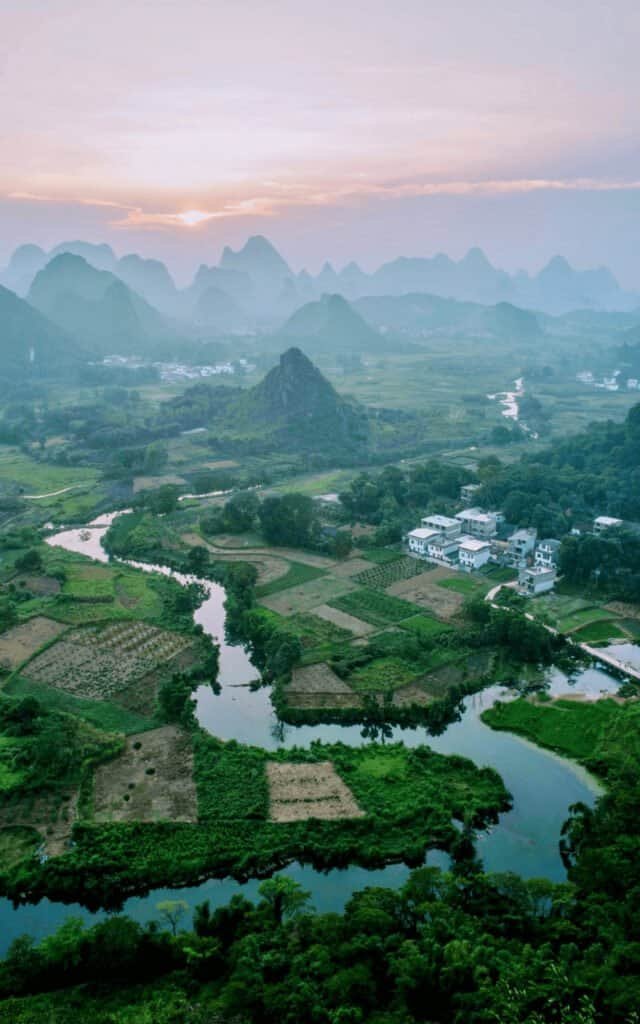
How to Get To Xianggong Mountain
The best way to handle the hike is by staying near the site. In that case, your accommodation will be able to help you handle the transportation to the base of the mountain.
Taxi
In case you’re staying in Yangshuo or hiking the mountain at another time of day, Xianggong Shan is located around 33 Km from Yangshuo, and it will take around 35 minutes by taxi
If you’re tight on time, this is the most efficient choice. Don’t hesitate to ask your hotel staff for help with this—they can often arrange a taxi or at least explain the plan to the driver for you.
Bus
For the adventurous souls, you can take a bus from Yangshuo Bus Station to Xingping, then rent a bamboo raft at the dock and head upstream.
You disembark at the Lengshui Ferry, and then you’ll take a scenic one—to two-hour hike along a country road to reach Xianggong Mountain.
Guided Sunrise Hike Tour
If you don’t want to handle the hiking plan yourself, If DIY is not your thing, this is a great sunrise tour of Xianggong Mountain.
Guilin Visit
On the afternoon of the second day, it was time for us to head back to Guilin. The easiest and safest way is to ask your accommodation in Yangshuo (or near Xiangong Mountain) to call you a taxi. Mention this when you book or arrive so they can arrange it in advance, as transportation from that area isn’t always readily available. Expect the journey to take about an hour. Once in Guilin, you’ll have plenty of time to explore these sights:
- Rong Hu Area and its serene lake setting, where locals practice Tai Chi and dance under banyan trees.
- Shanhu Lake Area and the Moon and Sun Pagodas (especially beautiful at night).
- Zhengyang Walking Street and its vibrant Asian atmosphere with a variety of street food, shops, and restaurants. This is the perfect place to grab dinner.
- Elephant Trunk Hill, the iconic natural rock formation resembling an elephant drinking from the river.


Day 3. Longji Rice Terraces & Rural Villages
On the third day, we headed early to the Longji Rice Terraces, another natural wonder.
The terraces’ appearance changes with the season, and the southern Chinese rainy season gave our visit such a suggestive atmosphere.
We saw them under a light but constant rain, with puddles reflecting the landscape, punctuated only by the occasional raindrop. While I would have loved to see the vibrant greens of spring or the golden hues of harvest, every season has its charm (though I did wish the rain would stop for just five seconds!).

Beyond the stunning scenery, the terraces showcase the ingenuity and hard work of the Zhuang and Yao people, who have carved them into the mountains for centuries.
Once there, you can connect with rural China and experience the local culture by visiting the surrounding minority villages. If you’re not visiting during the rainy season (and I hope you aren’t!), hiking the terraces is a must.
Nearby is the Zhuang Village, a tiny village of wooden buildings where technology seems almost nonexistent. I recall seeing an elderly woman washing clothes by hand outside her house. In the village, there’s a family-run hostel, Guzhang Hostel, with a restaurant where we had lunch.

The owner, a kind Chinese lady, prepared homemade specialties just for us and a couple of Japanese travelers—it was a truly special experience! You can’t miss it; it’s the only hostel in the village.
After lunch, we returned to the van and headed back to Guilin.

How to Get There
The Longji Rice Terraces are tucked northeast of Guilin, about 2.5 to 3 hours by car. While it might seem like a trek, the journey is worth every minute.
The most hassle-free way to get there is to ask your accommodation if they offer shuttle services to the Longji Ancient Zhuang Village, the closest point you can reach by bus.
Most hotels in Guilin offer this service, as the rice terraces are a must-see attraction for travelers in the area.
Once you’ve soaked in all the magic and charm of the Zhuang Village and the mesmerizing Longji Rice Terraces, it’s time to wrap up your adventure and return to Guilin.
And just like that, we’ve come to the end of this Guilin travel itinerary!
I hope this post helped you plan your trip. Guilin and the surrounding areas are a must-see in China, especially if you want to experience a different side of the country.
There’s so much untamed nature waiting to be explored in China, and Guilin is just one of the gems that show off the country’s natural beauty ✨.
Did you find it helpful? 📌 Pinning is caring!
